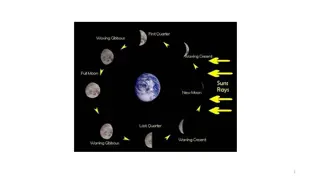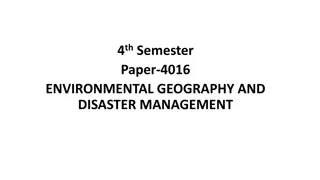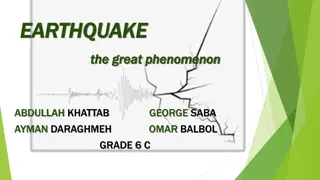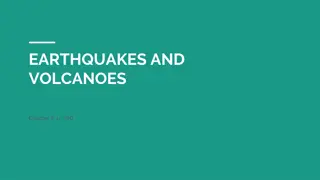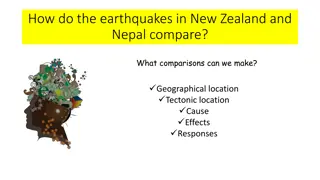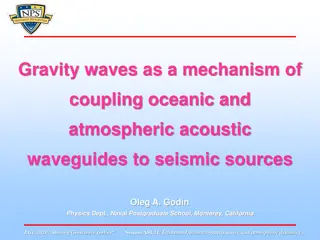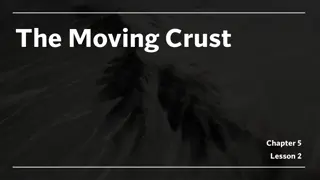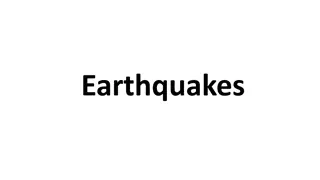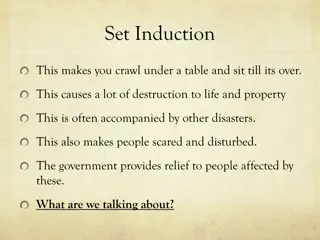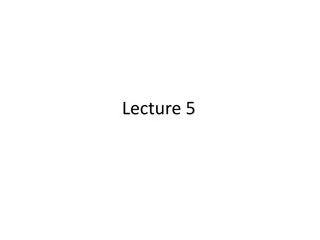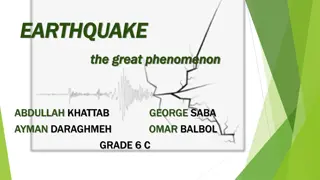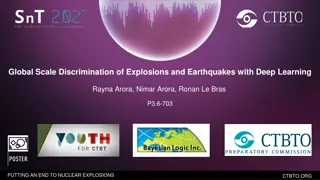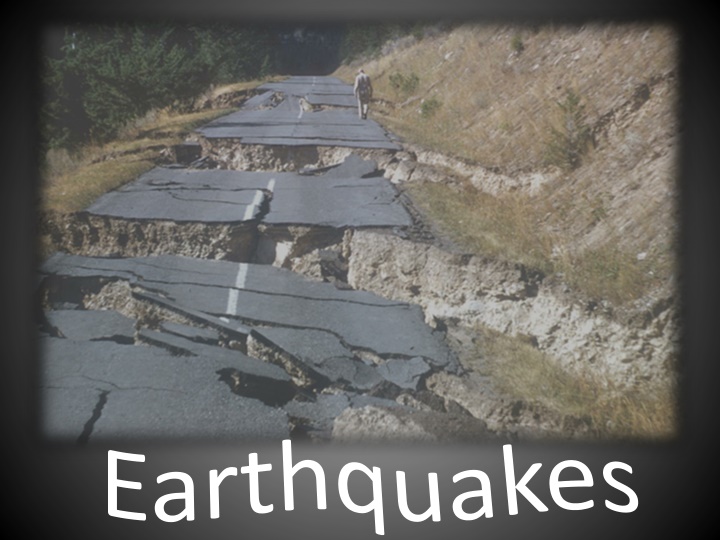
Understanding Earthquakes and Their Hazards
Learn about earthquakes, including their causes such as elastic rebound, aftershocks, Richter Scale, intensity, and associated hazards like building failures, tsunamis, and landslides. Explore earthquake waves such as P waves and their characteristics.
Uploaded on | 0 Views
Download Presentation

Please find below an Image/Link to download the presentation.
The content on the website is provided AS IS for your information and personal use only. It may not be sold, licensed, or shared on other websites without obtaining consent from the author. If you encounter any issues during the download, it is possible that the publisher has removed the file from their server.
You are allowed to download the files provided on this website for personal or commercial use, subject to the condition that they are used lawfully. All files are the property of their respective owners.
The content on the website is provided AS IS for your information and personal use only. It may not be sold, licensed, or shared on other websites without obtaining consent from the author.
E N D
Presentation Transcript
Earthquakes Earthquakes series of shock waves traveling through the earth http://www.youtube.com/watch?v=cavq2 HFBa-U Elastic rebound a movement (slippage) caused by rocks shifting to an unstressed position, when this movement occurs waves of motion in the earth radiate from the point of slippage
Earthquakes Aftershock secondary earthquakes produces when slippage occurs in one location of the fault it increases strain in another location causing more slippage Seismologists earthquake scientists Seismographs instruments that detect and measure earthquake waves
Earthquakes Richter Scale named after Charles Richter. The scale indicates the magnitude of the earthquake. (Ranges from 0 9+. Anything over 3 you can feel.) Magnitude amount of energy released Each step up the Richter Scale indicates 31.6 times more energy. (Ex. Magnitude 3 on the Richter Scale has 31.6 times more energy than a magnitude 2).
Earthquakes Intensity earthquake s destructiveness Factors of intensity include: Location underground Distance Duration Structures and population nearby Focus center of the earthquake s activity Epicenter the location on the surface that is directly above the focus
Earthquake Hazards Hazard source of danger, cant do anything about a hazard Risk possibility of injury or property damage, reduce risk Hazards of earthquakes Buildings failing Fire electrical problems Tsunamis waves caused by earthquakes Landslides Mudslides https://www.youtube.com/watch?v=chbbiSCc zB8
Earthquake Waves Earthquakes series of shockwaves traveling through the earth
Earthquake Waves P Waves first waves to hit a seismic station, body waves (called P for primus, which means first) Body waves waves that can pass through the interior of the earth Can travel through solid and liquid material Travel through the earth (mantle, crust, inner and outer core) Short wavelengths and short amplitude Wavelength distance between crests Amplitude amount of the earth that is displaced from its resting position
Earthquake Waves S Waves second waves to hit a seismic station, body waves (called S for secundus which means secondary) Body waves Large amplitude Slower and stronger waves Travel only through solid material Do not penetrate core just lithosphere and mantle
Earthquake Waves L Waves last waves to hit a seismic station, travel along the surface Slowest of the earthquake waves Most destructive of the earthquake waves
Earthquake Waves How do we know where the epicenter of an earthquake is? Length of time between the P and S waves indicates distance from the epicenter. Three seismic stations record the time between the P and S waves. Each station then draws a circle using the station as the center of the circle, and the radius the distance from the epicenter. Where the three circles meet is the epicenter.
Predicting Earthquakes Some earthquakes follow volcanoes Some volcanoes follow earthquakes Historical data Bottom line we cannot predict earthquakes so work on making man made structures more earthquake friendly https://www.youtube.com/watch?v=ROYO r2WbZdw
10 Things You Didnt Know About Earthquakes http://www.youtube.com/watch?v=ftZVk0CU WxA Complete corresponding worksheet.


